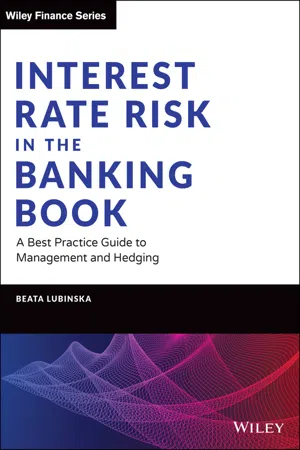
Interest Rate Risk in the Banking Book
A Best Practice Guide to Management and Hedging
Beata Lubinska
- English
- ePUB (disponibile sull'app)
- Disponibile su iOS e Android
Interest Rate Risk in the Banking Book
A Best Practice Guide to Management and Hedging
Beata Lubinska
Informazioni sul libro
Introduces practical approaches for optimizing management and hedging of Interest Rate Risk in the Banking Book (IRRBB) driven by fast evolving regulatory landscape and market expectations.
Interest rate risk in the banking book (IRRBB) gained its importance through the regulatory requirements that have been growing and guiding the banking industry for the last couple of years. The importance of IRRBB is shifting for banks, away from 'just' a regulatory requirement to having an impact on the overall profitability of a financial institution. Interest Rate Risk in the Banking Book sheds light on the best practices for managing this importance risk category and provides detailed analysis of the hedging strategies, practical examples, and case studies based on the author's experience. This handbook is rich in practical insights on methodological approach and contents of ALCO report, IRRBB policy, ICAAP, Risk Appetite Statement (RAS) and model documentation. It is intended for the Treasury, Risk and Finance department and is helpful in improving and optimizing their IRRBB framework and strategy. By the end of this IRRBB journey, the reader will be equipped with all the necessary tools to build a proactive and compliant framework within a financial institution.
- Gain an updated understanding of the evolving regulatory landscape for IRRBB
- Learn to apply maturity gap analysis, sensitivity analysis, and the hedging strategy in banking contexts • Understand how customer behavior impacts interest rate risk and how to manage the consequences
- Examine case studies illustrating key IRRBB exposures and their implications
Written by London market risk expert Beata Lubinska, Interest Rate Risk in the Banking Book is the authoritative resource on this evolving topic.
Domande frequenti
Chapter 1
What is IRRBB and why is it important?
